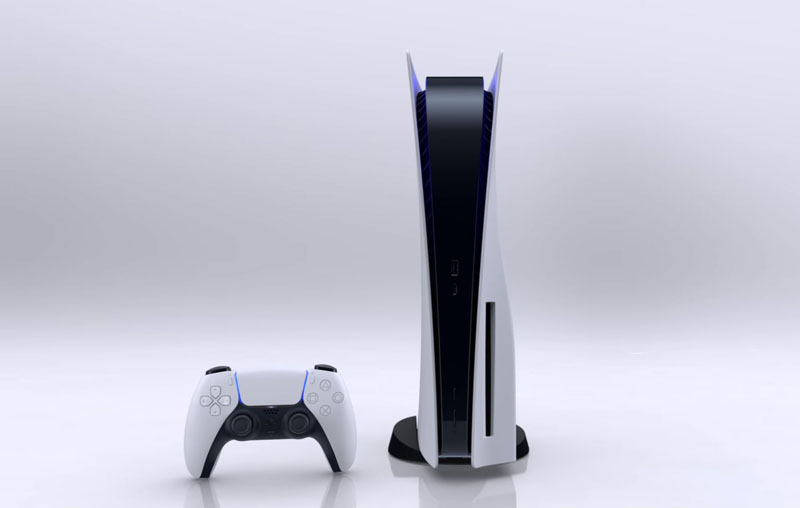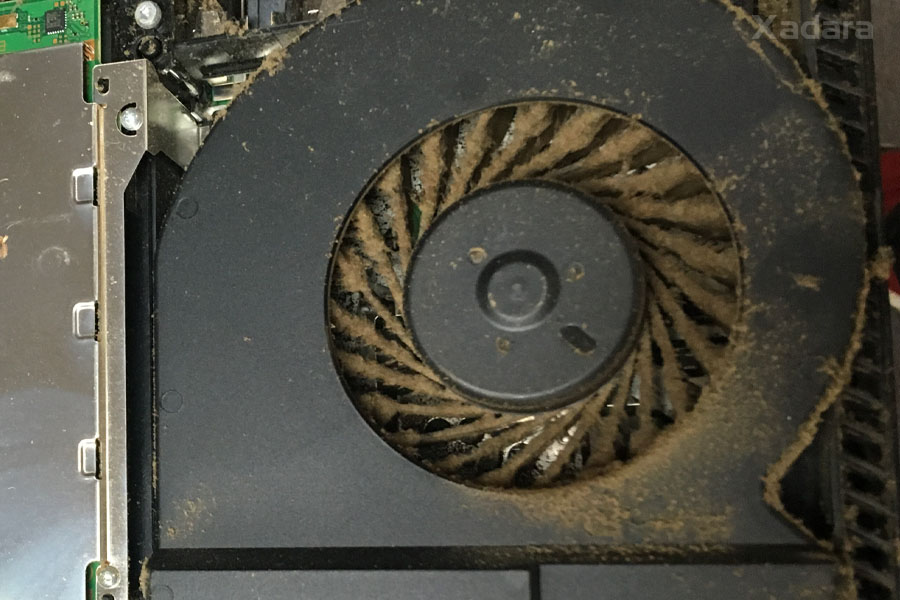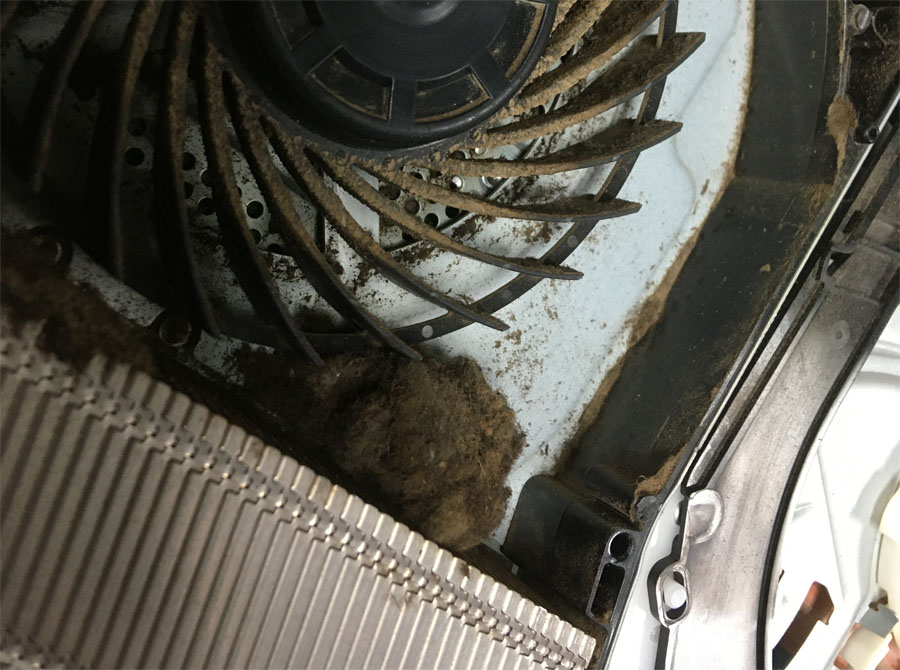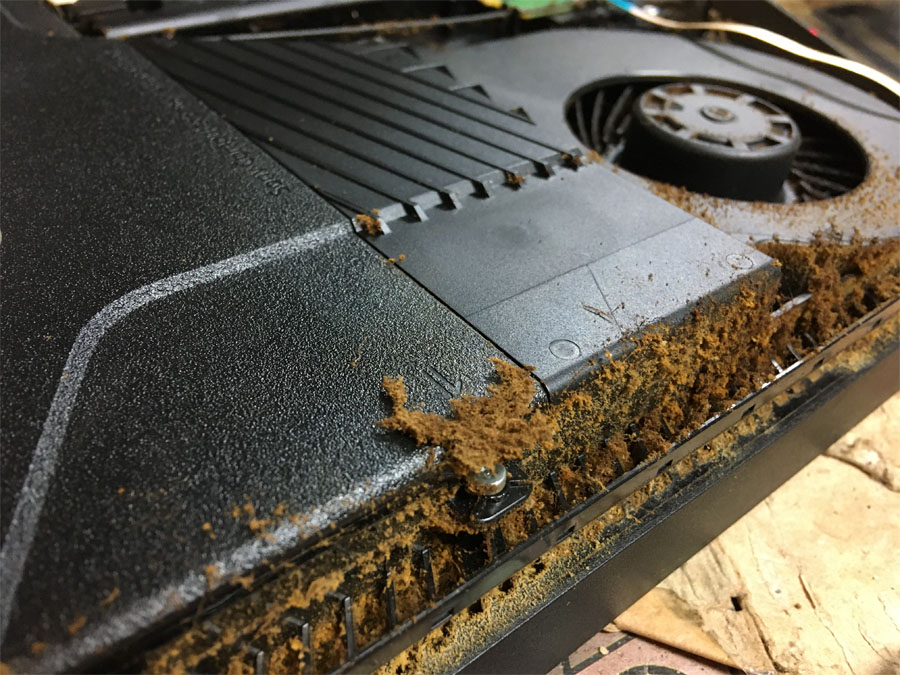The PlayStation 5 is big. Very big. Beyond it’s early 2000’s internet gateway look (seriously, it does look like an unused piece of networking kit that’s sitting in my closet right now) the overall size of the machine is pretty massive, especially when you compare it to the predecessor, the PlayStation 4.

It also looks almost comically massive when you compare it to the Xbox Series S — less so when compared to the Series X and its monolithic design, but still that’s an overall smaller piece of kit.
Indeed, its size is reminiscent of the original model of PlayStation 3 and is to some degree similar to that of the original Xbox One.
The design is also quite the departure from the standards Sony has been going with for the past decade or so, with the design of the “Slim” PlayStation 3 and all variants of the PlayStation 4 — this design basically involving all air coming into the system being passed around various components before finally moving through a heat sink gathering heat from the main processor, that heated air being passed through the Power Supply before finally being exhausted out into the room.
It’s quite compact engineering and is honestly a design that works, so long as everything is clean. It seems odd then, if this design worked and kept systems small, that Sony would do something so different this time around. There has to be a reason, right? We’re not talking from an overall visual standpoint, mind you, but in how the system actually does cooling because that’s the root of the PS5’s bulk – the cooling system.
Understand this: there is no reason in principle they couldn’t have kept using the same previous airflow design, scaled properly for the heat dissipation of the system. It obviously worked in transition from the PlayStation 3 to the PlayStation 4, much in the same way the overall design of the Xbox 360 S was retained in the original Xbox One design. The Xbox Series S, for the most part, even still continues the Xbox One S design ethos, so, what gives in Sony’s design camp?

This is where the peanut gallery, traditionally, chimes in with their talk about terraflops and over-obsession with hardware specs. Stop right there, none of that matters here. Well, not in a direct sense – we’re not focusing on processing power but raw heat generation which, contrary to what many think, stays somewhat consistent among hardware families as the tech evoles, and you must remember that at the core the PlayStation 5 and Xbox Series X/S hardware families are direct descendants of the Xbox One and PlayStation 4. This means while, yes, they are reasonably more powerful they are also more efficient in that they are more modern pieces of engineering, based on the same existing architecture.
What that means in simple terms is heat generation likely hasn’t changed much. Not enough for one to start saying that the PlayStation 5 needed to be big to “deal with the heat of a what-the-fuck-ever terraflop processor. That simply doesn’t follow, especially considering that, again, Microsoft could use a more traditional design for the Series S.
This also misses the point of a cooling system entirely — getting heat from the processor and supporting hardware into the air to be exhausted into the room. Any system can work so long as it is scaled to deal with the heat generated.
With the PlayStation 5 what is of importance and focus to me is that we don’t simply have a scaled up version of the PlayStation 4 cooling design but an entirely new one. Again, there has to be a practical reason behind this, and with my experience in system repair I’m pretty sure I know exactly why it is the way it is.
One word. Dust.
More correctly, heat sinks and airflow of systems being blocked by dust or, more often in my experience, cigarette smoke.
Among the many design flaws I’ve found with the PlayStation 4 is a tendency to clog with dust and, eventually, overheat – sometimes to a degree that damages the system.
Don’t try to deny this doesn’t happen, either — it does. It’s a fact. It’s a damn common one that I deal with on an almost daily basis. The fact that the systems design pulls air from around it and passes it all through one singular point – the main heat sink – before blowing it out the back means that anything and everything that gets sucked into the system will collect at the heat sink.

Those blades, spaced only a millimeter or two apart, act as choke points for whatever finds its way into the system and, just like you can imagine, the filth begins to collect on both the fan blades and the heat sink fins.
The result? Air can’t pass through the heat sink. Air can’t collect the heat generated by the system, and the system overheats. This is a fact of thermodynamics, and would happen to any system with this kind of thermal engineering.
Compare this to, let’s say, any given personal computer, which is generally more spacious. While, yes, dust can and will clog up the heat sink of the processor and likely can and will clog up a graphics card (those tend to use the same “forced air” method as the PlayStation 4) things are more spacious so dust has a chance to collect in other areas where it can do less damage. Additionally, given that there is more open space air can still flow around the various heat sinks and thus things can still stay somewhat cool. It also makes cleaning of these devices easier, as the dust has somewhere to go when blown out, even with minimal disassembly of the computer.
Now, I bring up the Xbox One earlier because it has the same thing going on — even in the S revision, it’s still relatively open, with air being pulled in to the fan from all around the console, exhausted out at the end rather than forced through the system. Dust can’t really collect anywhere too major, and certainly can’t block all airflow as easily.
That’s the key difference — the Xbox family of hardware has traditionally pulled air in, let it flow around components and through the heat sink naturally, then exhausted it. The PlayStation 4, on the other hand, takes a forced approach once you hit the heat sink which, again, isn’t bad, but since it requires a “tunnel” to be made for the air to leave the system, you increase the likelihood of dust collecting in this very critical area.
Consider this: the PlayStation 4 “slim” revisions and the PlayStation 4 Pro both have a toolless removable top plate which allows you access to the system fan for cleaning of dust. To do a proper clean you would still need the tools to remove the power supply (just as in the original design) but at least it’s an option. Too bad the fan is before the dust choke point that is the heat sink, not after and thus in the most case you’re blowing dust even more into the heat sink than out of it.
Really, the cooling system sucking in dust is the real problem with thermal design in such consumer devices. This is hinted at by the fact that a feature of note on the PlayStation 5 is that it has a few “dust traps” at the main air intakes. When you look at that, plus the sheer size of the thing and it’s relatively spacious nature (especially when compared to the PlayStation 4 family) it becomes bloody obvious that the PlayStation 5 was designed to better handle the very likely “filthy” conditions the system may find itself in.
People tend not to take care of things, especially here in the United States. While in Japan people seem to be more apt to care for something they just spent the equivalent of $300+ dollars on, here in the United States for most people these things seem to be a means to an end, and barely understood by their owners as things that can break from neglect or abuse.
Sony designed the PlayStation 5 to, hopefully, better survive at least this one aspect of real world usage and I honestly commend them for it. People can say it’s because of the big cooling fan, but the fan is just part of the overall thermal design — a means to an end, if you will, not the be-all-end-all for cooling. It’s not just about how much air you move but how well you release heat into that air and, more importantly, ensuring that down the line the hardware can still release the heat it generates into the air efficiently.
This, of course, is just one aspect of the engineering — don’t think it’s only about dust. Far from it — it’s just I feel it has been well taken into consideration alongside every other design aspect of the machine.

What good is a massive fan if the heat sink is clogged? None. That’s what.
I’ll end with this, which may piss off some people but it needs to be said. The design of the PlayStation 5 is, in a way, an admission that the thermal design of the PlayStation 4 was indeed flawed. That means the system wasn’t nearly as great as many of its fans wished to make it out to be and this is something that should not be ignored when discussing it in the future. What good is a game system you love if its cooling system clogs and it overheats?
Nothing is perfect. Every game system has flaws, but some have ones that are, to me, more critical than others and in my experience some fans of some systems tend to ignore these things, lest they admit what they align with isn’t as perfect as they see it.
Just a thing to consider.
